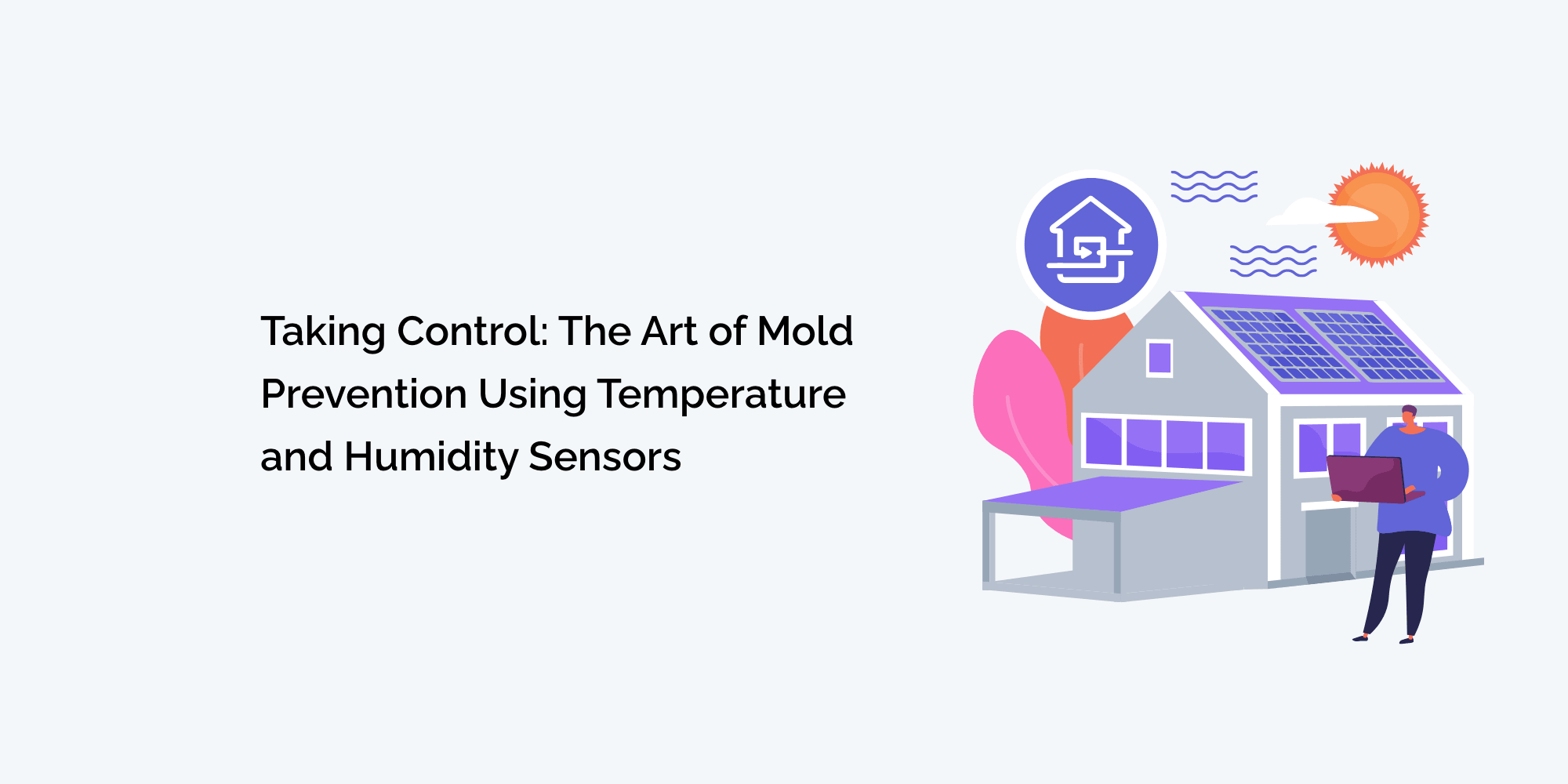Mold infestation is a common and underestimated problem that can wreak havoc on our living spaces and health. The key to effective mold prevention lies in controlling indoor conditions, particularly temperature and humidity levels.
In this comprehensive guide, we will explore the art of mold prevention using temperature and humidity sensors.
By understanding their significance and learning how to leverage them, you can ensure a healthier and mold-free environment for you and your loved ones.
Understanding the Mold Threat
Mold is not just an eyesore; it can lead to severe health issues and property damage. Mold spores are present everywhere, but they flourish in environments with excess moisture.
High humidity levels combined with stagnant air provide an ideal breeding ground for mold. When left unaddressed, mold growth can degrade indoor air quality, compromise structural integrity, and trigger allergies and respiratory problems.
The Crucial Role of Temperature Sensors
Temperature plays a pivotal role in mold prevention. Mold tends to thrive in temperatures between 77°F (25°C) and 86°F (30°C). By maintaining indoor temperatures outside this range, you can significantly impede mold growth.
Temperature sensors serve as essential tools for monitoring temperature fluctuations in your living spaces. They provide real-time data that empowers you to make informed decisions about adjusting your HVAC system to maintain optimal temperatures for mold prevention.
Harnessing the Power of Humidity Sensors
Among the factors that contribute to mold growth, humidity is perhaps the most influential. Mold flourishes in environments where relative humidity exceeds 60%.
Humidity sensors offer a real-time assessment of indoor humidity levels, enabling you to keep them below the mold-friendly threshold.
By utilizing dehumidifiers, proper ventilation, and data from humidity sensors, you can create an inhospitable environment for mold spores to colonize.
Advantages of Temperature and Humidity Sensors:
-
Proactive Mold Prevention: Temperature and humidity sensors empower you to take proactive measures to control conditions that foster mold growth. By having accurate and consistent data at your disposal, you can adjust settings and implement strategies to prevent mold from gaining a foothold.
-
Enhanced Health and Well-being: Mold exposure can trigger allergies, exacerbate asthma symptoms, and cause respiratory issues. By maintaining optimal indoor conditions through sensors, you create a healthier living space for you and your family, reducing the risk of mold-related health problems.
-
Preservation of Property: Mold doesn't just affect health; it can also damage furniture, walls, and the overall structure of your home. Using temperature and humidity sensors to control conditions safeguards your property investment by preventing mold-induced damage.
-
Energy Efficiency: Monitoring temperature and humidity levels using sensors enables you to optimize your heating and cooling systems. This not only helps in mold prevention but also enhances energy efficiency, leading to cost savings on utility bills.
-
Peace of Mind: The knowledge that your indoor environment is being actively monitored and controlled provides a sense of security. You can rest assured that you're taking concrete steps to maintain a mold-free environment for your family.
Conclusion
Mold prevention is a complex endeavor that requires vigilance and the right tools. Temperature and humidity sensors are not just accessories; they are essential instruments in your mold prevention toolkit.
By employing these sensors, you're not only safeguarding your property and health but also taking control of your living environment. Investing in temperature and humidity sensors is a proactive step towards creating a comfortable, healthy, and mold-free indoor space.
So, seize the opportunity to embrace the art of mold prevention through these sensors and enjoy the countless benefits they bring to your life and home.








